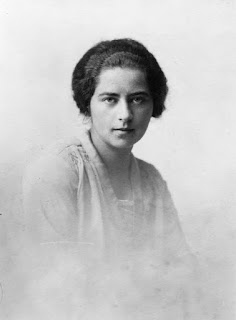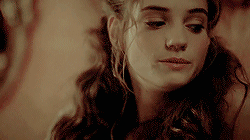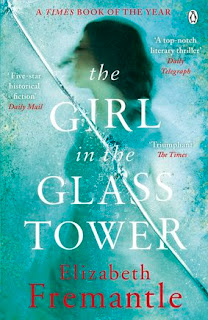Ever since “The Tudors” ended in 2010, producers have been
trying to find a royal family that can fulfill an audience’s craving for dysfunctional
bluebloods. An
article by Elizabeth
Fremantle, a renown historical fiction author, got me thinking if the
Stuarts could be the new trend. I happen to love the Stuarts, but I must display
skepticism at such elevation. Judging by
contemporary period dramas, they were not exactly the most exciting or most
positive royals around. One tremendous example is what Starz “Outlander” (and
Diana Gabaldon) have done with Bonnie Prince Charlie, the most famous and
charming of the Stuart family.
While preparing for the third season of “Outlander,” I decided
to watch earlier episodes. I was struck
by the tragic Jacobite devotion for The King over the Water. On the first
season, Claire is mystified by this readiness to die for a king that she knows
was undeserving. After we catch a glimpse of the real item, viewers share her
impression. In books and series, Bonnie Prince Charlie is shown as a selfish
dunce, but that is how historical fiction perceives the Stuart overall, some bunch
of useless idiots. I cannot see them ever replacing the Tudors.
Stuartmania vs
Tudormania?
To replace Tudormania with Stuartmania, writers and
producers would have to wipe our minds clean of any preconceptions and misconceptions
dealing with the regalest of Scottish clans. Michael Hirst, Philippa Gregory
and Hilary Mantel were the architects of the second and more everlasting wave
of Tudor fascination but they had to work their heads off rewriting historical
facts and characters and making them palatable to the public.
History tells us Henry VII, founder of the Tudor dynasty,
was a tyrant, and usurper, and a greedy man. In comes Pippa Gregory and turns
him into a frightened young man who stands king only through the joint efforts
of his formidable mother and his little York wife. In Starz’s crazy adaptation of
“The White Princess” Queen Lizzie became a badass and a black hearted
dominatrix, bent into making her monster children the future rulers of England.
 |
| The White Princess and her king |
We all know Henry VIII was a fat satyr, a wife-murderer, and
a despotic king, but modern historical fiction gives us a thin and brooding
tragic hero. His daughter, Bess, who was a distrustful, neurotic bully has been
transformed into a cross between a British Madonna (the Virgin Mary not the
former Mrs. Guy Ritchie) and Spencer’s idealized Fairie Queen. Even her sadistic sister, in “The Tudors,” falls into
the wronged little princess stereotype, the Sansa Stark of Henry’s Court.
No such treatment has befallen on the Stuarts. There is always Mary, but let’s be honest,
there was more Guise and Tudor in the genes of the Queen of Scots, than Stuart wishy-washiness.
She was French born, and French bred, had no understanding of Scotland, and no
cultural links to the British Isles.
 |
| Mary's happiest years were in France |
Dull King James and the Two
Charles
And yet, once the Stuart
princes projected a glamorous image on the silver screen. David Niven in kilt was
a proud and gallant Bonnie Prince Charlie, and a fantastic dashing Sam Neill was
his uncle Charles II in lovely “Restoration.” It’s the Third Millennium which
has taken the Stuarts to task by conferring them infamous fame. The family is
well represented in current television series, and some films as well, but none
of these Stuarts kings (or their kin) can muster up the same allure mad Tudors exercise
upon us.
 |
| Sam Neill as Charles II |
Poor King James who united
England and Scotland, has only shown his face in two recent dramatizations. In “Gunpowder:
Love and Treason” he was played by the ever-competent Robert Carlyle, but
something went wrong. Carlyle, fresh from his starring role in “Hitler,” enacted
James as if the actor was still in a brown shirt. The king came across as a
paranoid tyrant, not a man who would rewrite the Bible.
 |
| Tormented King James and his Danish queen |
Jonathan Pryce also played Mary Stuart’s only son in “The New
World,” but he was overshadowed by a steamy triangle where Colin Farrell and Christian
Bale fought for the hand of lovely maiden Pocahontas. We as public have yet to know the factors
that made King James interesting. None of those films showed his remarkable
knowledge, his literary patronage, his witch-hunting, or his bisexuality.
So much for James, then comes his poor beheaded son. Rupert
Everett was a decent Charles I, in the film “To Kill a King,” but he seemed a
bit dazed perhaps because there were so many historical inexactitudes in that
account. Also, because Tim Roth, impersonating a bloodthirsty Cromwell, was
bent to chew the scene to the point that he climbed to the scaffold with the
king. For a moment, I thought he would chop off Charles’ head. He could have,
since in real life, the two official hangmen of the reign refused to commit
regicide. To this day, nobody knows who decapitated Charles.
 |
| Rupert Everett and Tim Roth, on the scaffold, in "To Kill a King" |
The martyred king was again decapitated in the rather dull
ITV miniseries “The Devil’s Whore,” where he was played impeccably by Peter
Capaldi in his pre-Dr. Who stage. And that is the extent that we get to know about
poor beheaded Charles whose sole purpose in life seems to have begotten the
flamboyant Charles II. But even the executed king’s son has merited a dull treatment.
Taking advantage of the public’s appetite for royal affairs,
the BBC, in 2003, decided to gift us with “Charles II: The Pride and the Passion.”
Despite its bombastic title, it was a tepid affair. Not even charming Rufus Sewell
could lift that sinking weight. To add insult to injury, the series was cut, chopped,
butchered, in the clumsiest manner, so American audiences got to watch a
fragmented and confused tale.
Still, Charles II is too good material to waste. In 2004,
Rupert Everett, who likes to play kings and charming princes, went on to
portray old King Charlie in “Stage Beauty.” As his was a secondary character,
we tend to remember that he slept with Nell Gwynn (Zoe Tapper) more than any
other kingly things he performed. A much more prominent role was given to John Malkovich
in “The Libertine.” Obviously, Malkovich was out staged by Johnny Depp who can out
stage a giant kraken, but oddly the king seemed more destructive than his
friend and protégé, the infamous Earl of Rochester (Depp). Charles came out as
a self-serving, incompetent monarch. Rochester had to drag himself on crutches (and
with a face corroded by syphilis) to save his king from Parliament. How torpid
can a sovereign be to need that?
That is the image Charles II, and other Stuarts, on the
rebound, project on films obviously made by anti-monarchists. Just think of
Jeremy Northman in “New Worlds” (I loved his wig, though), Jack Huston in “The
Great Fire,” or Daniel Lapaine in “Versailles.” I haven’t seen Charles Dance in
the Dutch film “Michel de Ruyter,” but I can bet money that he is not a
positive Charles. If the sexiest of the Stuarts gets bad press, what is left
for the others?
The Stuart Queens
Charles had a brother, James, but not even his subjects
loved him and had him replaced by Mary, his Protestant daughter, whom I have
yet to see in any piece of fiction. Oh, wait, "Versailles" showed her on the first
season’s finale. A little girl that is offered to William of Orange as a future
bride. Aside from the fact that Maryland
was named after her, what do we know of this Queen Mary? She was barren, had a crush on a girlfriend
when she was young and her husband was supposed to be gay. Maybe something
could be done with that.
 |
| "Queen Mary and William of Orange |
Her sister Anne, who was also a queen, made a career
giving birth to dead babies, had chairs named after her, and was totally under
the thumb of her favorite lady-in-waiting, Sarah Churchill. Soon we are to see
Anne played by Olivia Coleman in “The Favorite,” but in this incoming film, all
the action will be centered around Sarah (Rachel Weisz). That is the rub with Queen
Anne, she matters only as patron-friend-bitch of the Duke of Marlborough’s
wife.
The “Bonnie” Prince
We should go back to rejected king James II to find a Stuart with
an ounce of charisma. Not old James—he comes across as a true monster in
literature. Victor Hugo makes him the mastermind behind the deformity of his
protagonist, in The Man Who Laughs.
By James’ royal whim poor Captain Blood
is sold into slavery. We do not need to hear more of James, it’s his grandson
who matters, the charmer in the family, the aptly named “Bonnie” Prince
Charlie.
 |
| The real Charles James Stuart |
Bonnie and charming he was in literature, especially in Sir
Walter Scott’s novels, or played by Ivor Novello in the silent cinema or David
Niven in the talkies. Thanks to those works, I had a romanticized vision of
this unhappy prince and his lost Jacobite Cause. It was hard for me to
reconcile him with what the historians told me, that he was a petulant stubborn
man, who neglected his illegitimate children, raped his wife and led thousands
of his subjects to death or misery. Nevertheless, that was the vision “Outlander”
spouses. Diana Gabaldon really dropped the bomb on Charles Stuart, and the
series echoed her scorn for the Young Pretender.
In the second season of “Outlander,” time traveler Claire
and her husband Jaime Frazer decide that the only way to save Scotland from the
tragedy of Culloden is to ensure that battle will never happen. They travel to
France to thwart Charles Stuart’s plans to travel to Scotland. Through the
ministrations of his cousin Jared, Jamie gets an audience with the Bonnie
Prince, but since Charles is living incognito, they meet at the most unlikely of
places, a brothel.
The setting foreshadows the Prince’s appetites, his lust, and
frivolous and irresponsible nature. Charles is charming and not stupid, but he
is also naïve and rather cutout from reality. He displays dismissive arrogance
with Murtagh (who is escorting his godson) and is angry at Jamie when he is not
told what he wants to hear.
In a way, Charles acts like Daenerys Targaryen in a powdered
wig. After demanding that Jamie tells him the truth, he feels offended when
young Frazer tells him that the clans are too busy fighting each other to rally
behind a pretender to battle the English. However, in a twist that displays his
volatile personality the prince praises Jamie’s honesty and patriotism and
charges him with getting the necessary funds to finance his enterprise.
Now the Frasers must double their efforts to hinder the
upcoming rebellion. It’s an impossible task, the Jacobean Cause does get French
support thanks to Bonnie Prince Charlie’s personal magnetism, which appears to
be his sole virtue. The Frasers and the public are dismayed since this future
king seems to be more into conducting affairs of the boudoir than of states. He
is soon involved in a liaison with his sassy married cousin Louise de la Tour D’Auvergne
and gets her pregnant.
What horrifies Claire is Charles’ incompetence and his lack
of care for both the people and the land he expects to rule. He’s never set
foot in Scotland, he knows nothing of his people, and has no interest in learning.
He is driven by a sense of mission inadmissible to modern logic. He believes to
be divinely anointed, almost as if Melisandre had whispered such notion in his
ear. We, historical fiction fans, are used to hear monarchs harping about their
divine right to reign, but there is something tragicomic in Charles, an actual Beggar
King, making that claim in the middle of a brothel.
This negative portrait of legendary Bonnie Prince Charlie
was noted by a public that still saw him as the epitome of Charming (ergo ill-fated)
Prince. In
an
interview in IGN, Sam Houghton, who plays Jamie Frazer, expressed his shock
at learning that a beloved Scottish
folk-hero was, in fact, not very heroic:
“He’s been romanticized in Scotland to an extraordinary
degree. The Skye Boat Song is about him, our main theme is about him. There’s
pictures of him in Scotland,” Heughan said of Bonnie Prince Charlie. “It’s been
romanticized about the great rebellion and his escape, and actually when you look
at history you see that he was useless. He was completely ineffectual and led
these Highlanders to their doom.”
With this sad portrayal of the selfish pretender, the Stuart
Cause was lost. There was no way the public could be galvanized by that royal last
name once its most fascinating bearer was outed as a narcissistic idiot. Henry VIII
was egotistical and vain, but he won battles, got his women, and ruled his
country. Poor Charlie couldn’t rule himself.
Minette, the Silly Slut
Moreover, the same year that “Outlander” pulled down Bonnie
Prince Charles from the altar of historical heroes, another show went after
another Stuart icon. For centuries, historians and writers have portrayed
Henrietta Marie, the sister of Charles II, as a victim; a wronged wife, forced
to marry a homosexual, and probably murdered by her husband’s jealous lover. In
real life, she who was nicknamed “Minette,” was a hysterical anorexic, an adulteress,
and a bad mother to boot.
“Versailles” characterizes Minette as a silly slut, indulging
in an affair with her brother-in -law, the Sun King, a relationship that in
those days was deemed as incestuous. Played by Swiss actress, Naomi Schmidt, Minette
lies, schemes, betrays and breaks the heart of her poor husband.
She also lets
her royal lover use her body as well as her mind. He sends her in a secret
mission to England to ensure her brother’s support in France’s war against
William of Orange. Although in real life, Minette did possess diplomatic skills,
in the series she’s seen just like a talking doll delivering her lover’s words
to her brother, the King of England. Daniel Lapaine as Charles II didn’t seem
very bright either, so we can say “Versailles” did its best to show us the
Stuarts as a family of dull morons.
Lesser Stuarts may
prove to be more fetching
If the Stuart Kings prove to be less than appealing, we
would have to look among their siblings to find stories deserving to be told,
for example tragic Arabella Stuart, the Queen of Scots’ niece, who is the protagonist of
The
Girl in the Glass Tower, Elizabeth Fremantle’s latest novel.
There is also James Stuart, Duke of Monmouth, Charles II’s
illegitimate son who attempted to grab the throne from his uncle and namesake,
and ended up losing his head. If you add that Monmouth could have been the real
Man in the Iron Mask, you have plenty to work with.
 |
| The Duke of Monmouth |
The current British monarch, Queen Elizabeth II can trace
back her Stuart ancestry to Princess Elizabeth, daughter of the first King
James. The Winter Queen, as she was known, could have been queen of England had
the Gunpowder Conspiracy succeeded. She made a love match (a rarity in royal
families of the time) to Prince Frederick of the Palatinate, became the mother
of thirteen children, and was the grandmother of George, first Hanover king of
England. Dear Lieselotte of “Versailles” fame was her granddaughter, too. Elizabeth
did eventually rule Bohemia, part of modern Czechoslovakia. Alas, her reign was
short and sad.
 |
| The Winter Queen |
I’m fond of Elizabeth of Bohemia, but my favorite Stuart is
her son, Prince Rupert of the Rhine, famed military man, inventor, artist, and rumor
has it, wizard. He even had a magic dog that died fighting alongside his
master. So, it is possible to sell the Stuarts to the public, but only looking
beyond their dysfunctional kings. Do you have a favorite among that outlandish royal
family?































































